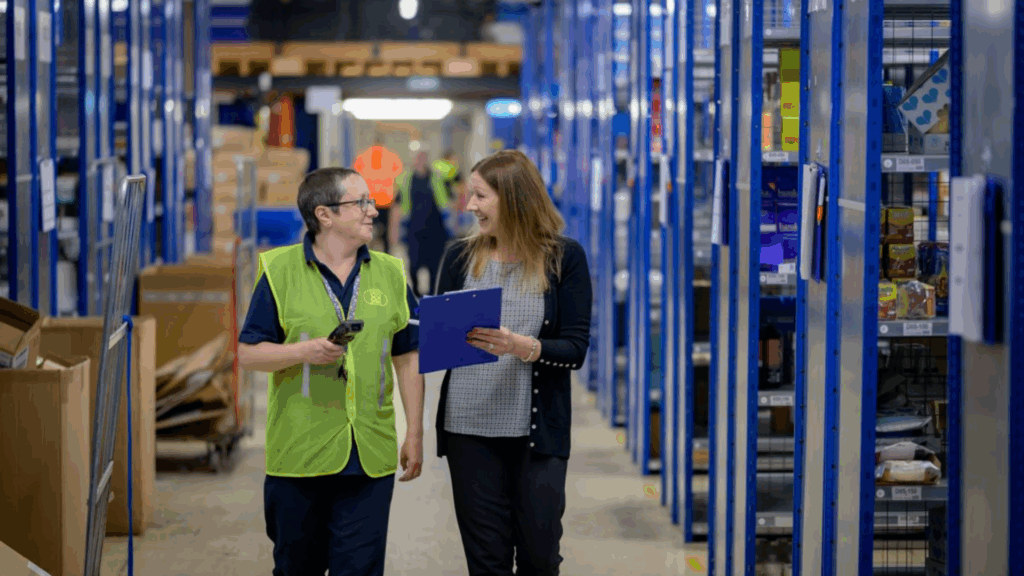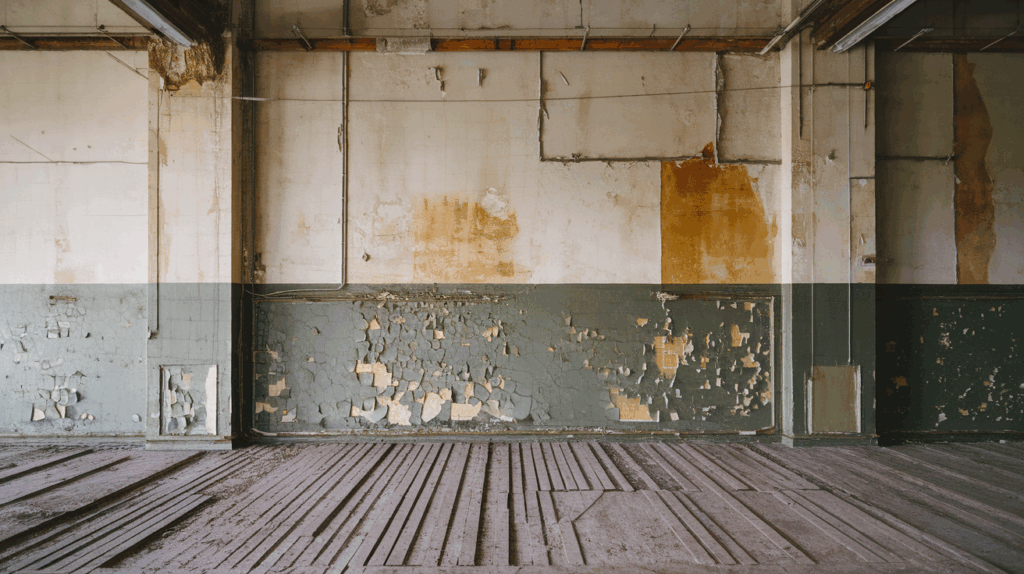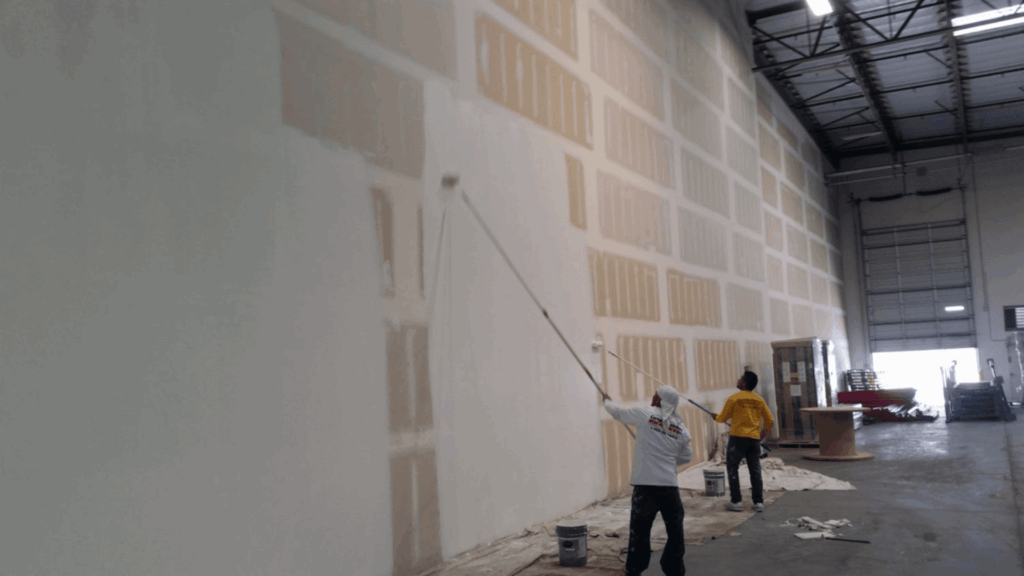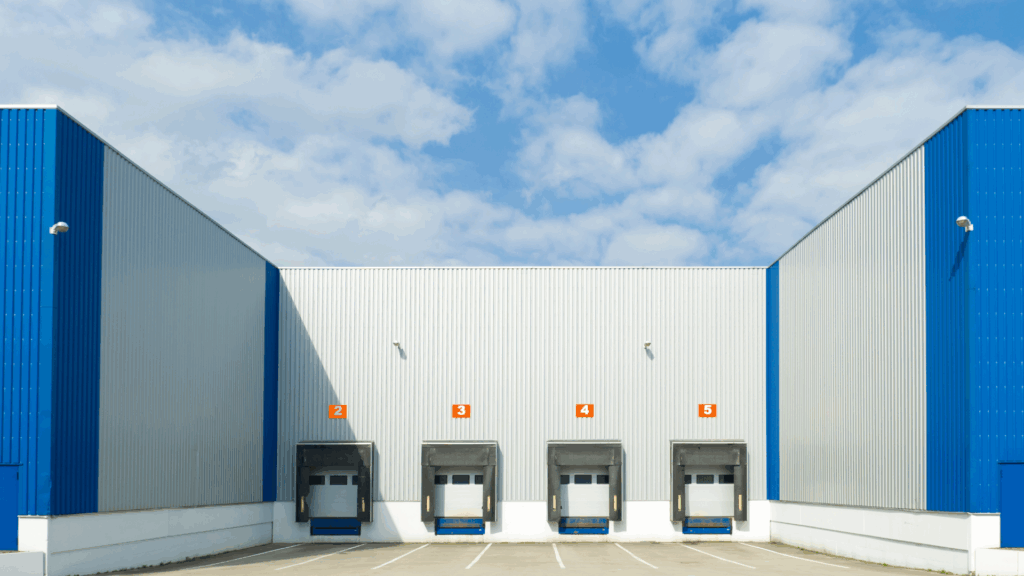Ever looked at a warehouse and wondered if a fresh coat of paint could actually make a difference?
I used to think painting one was just about color, until I managed a repainting project for an old distribution center.
If you’re here, chances are you’re figuring out how to do it right or if it’s even worth the effort. I’ve been through the same questions.
In this guide, I’ll walk you through what works, what to avoid, and how painting a warehouse can actually save money and boost operations.
We’ll also discuss the costs involved, from surface prep to labor and materials, so you can fully understand the investment required to get a long-lasting, professional finish.
Benefits of Painting a Warehouse

Painting your warehouse isn’t just about looks; it’s a practical upgrade with long-term value. From safety and performance to morale and maintenance, let’s see how a good paint job pays off:
1. Improves Visibility and Lighting
Bright, reflective paint on walls and ceilings can significantly increase natural and artificial light distribution.
This reduces dark corners and shadows, improves visibility during operations, and can even help cut electricity bills by lowering the need for extra lighting fixtures.
2. Boosts Worker Morale and Productivity
Employees tend to take more pride in a clean, organized workspace.
A well-painted warehouse feels safer, more professional, and less stressful to work in, especially when the layout is color-coded or clearly marked for function and flow.
3. Protects Surfaces from Damage
Industrial-grade coatings shield surfaces from moisture, rust, corrosion, chemicals, and everyday wear.
This prolongs the life of concrete, steel, and other materials, saving on repair or replacement costs over time.
4. Enhances Workplace Safety
Safety zones, forklift lanes, loading areas, and emergency exits can be clearly marked with durable paints.
These visual cues reduce the risk of accidents and keep your warehouse in compliance with OSHA and other safety regulations.
5. Reduces Long-Term Maintenance Costs
Painted surfaces are easier to clean and less likely to absorb dirt, grease, or spills.
Sealed floors prevent dust buildup and make it easier to maintain hygiene standards, especially in food-grade or pharmaceutical storage.
6. Increases Property Value and Appeal
If you’re leasing or planning to sell, a freshly painted warehouse creates a strong first impression.
It signals good upkeep, reduces perceived move-in costs, and helps your property stand out in a competitive market.
7. Supports Branding and Organization
You can use colors to align with your company branding or to visually separate work zones, like storage, production, and loading.
This makes the space feel intentional and organized, improving both function and professionalism.
Signs Your Warehouse Needs Repainting

Over the years, I’ve seen firsthand how a warehouse’s condition can affect everything from safety to morale. Let’s discuss the signs that tell you it’s time to repaint, based on my experience.
1. Peeling or Chipping Paint
If you notice paint flaking off the walls or floors, it’s a clear sign that the coating is no longer doing its job.
I’ve had jobs where the paint started peeling within months because of poor prep work or extreme weather exposure. It looks unprofessional and leads to more damage if not addressed.
2. Fading or Discoloration
Over time, exposure to sunlight or chemicals can cause paint to fade, especially on exterior walls.
I’ve seen warehouses with walls that turned dull or yellow, which made the space feel drab and uninviting. Faded paint can also affect lighting efficiency inside, leading to higher electricity costs.
3. Stains and Dirt That Won’t Clean Off
If your walls or floors are covered in stains and grime that no amount of cleaning can fix, the paint may have lost its protective barrier.
I once worked in a warehouse where grease stains on the walls wouldn’t come off, even after pressure washing. A fresh coat of paint made cleaning much easier.
4. Visible Cracks or Surface Damage
Paint that is cracking or bubbling is usually a sign that moisture is getting underneath, damaging the surface.
I’ve seen cracks grow into bigger problems, like rust or rot, if left untreated. Repainting gives you the chance to seal and protect the structure from further damage.
5. Outdated Appearance
A fresh coat of paint can make a huge difference in how your warehouse looks. If the space feels outdated or looks like it’s been neglected, repainting can refresh the whole atmosphere.
I’ve noticed that workers take more pride in a well-maintained space, which also boosts morale.
The Process of Painting the Warehouse

Painting a warehouse requires careful planning and execution to ensure a smooth, durable finish. Follow these steps to achieve a professional-looking result while maintaining a safe and efficient workspace.
1. Preparation
- Clear the Area: Move equipment or cover it with plastic sheets.
- Clean the Walls: Use soap, water, or a degreaser to remove dirt and grime.
- Repair Surfaces: Patch holes and cracks with filler and sand smooth.
- Mask Off Edges: Tape around windows, doors, and light fixtures.
2. Priming
- Select Primer: Use a primer suited for the surface (e.g., concrete, metal).
- Apply Primer: Apply a uniform coat and let it dry completely.
3. Choosing Paint
- Pick Durable Paint: Choose industrial-grade epoxy or acrylic paint.
- Calculate Paint Needs: Measure wall area and estimate the amount needed.
4. Applying the Paint
- Use the Right Tools: Rollers for large areas and brushes for edges.
- First Coat: Apply the first coat evenly and let it dry.
- Second Coat: Apply a second coat for a more durable finish.
5. Finishing Touches
- Touch Up: Inspect and fix any missed spots.
- Clean Up: Wash tools and remove painter’s tape while the paint is tacky.
6. Final Inspection
- Check Consistency: Ensure the paint is even and touch up if needed.
- Return Items: Move the equipment back once the paint has dried.
7. Maintenance
-
Regular Cleaning: Keep the walls clean and touch up as necessary.
Tips for Choosing Warehouse Paint Colors
Choosing the right paint color for your warehouse is more than just about looks; it plays a role in safety, lighting, and maintenance. Let’s take a look at some key considerations:
- Consider Lighting: Light-colored walls, such as whites or light grays, reflect more light and help make the space feel brighter. In some warehouses I’ve worked in, dark walls made the space feel cramped and required extra lighting.
- Focus on Safety and Visibility: Use bold colors like yellow, red, or green to mark walkways, hazard zones, and restricted areas. These colors help prevent accidents and keep the space in compliance with safety regulations.
- Keep Brand Identity in Mind: If the warehouse is customer-facing, consider incorporating your company’s brand colors. It creates a cohesive and professional look without overwhelming the space.
- Consider Durability: Select a finish that suits the wear and tear your warehouse experiences. Semi-gloss or satin finishes are more durable and easier to clean than matte finishes, especially in high-traffic areas.
- Be Mindful of Temperature: Lighter, cooler colors like blues and greens can make the space feel cooler, while warmer colors like reds and oranges create a cozier atmosphere. Consider the climate when choosing tones.
These tips will help you select paint colors that enhance both the visual appeal and functionality of your warehouse.
Warehouse Painting Cost
Let’s take a detailed look at the costs associated with painting a warehouse, including key factors such as surface preparation, labor, and materials.
| Cost Factor | Estimated Cost | Details |
|---|---|---|
| Typical Cost Ranges | $54,600 to $327,600+ | For warehouses 20,000 sq ft or larger, depending on size, prep work, and paint quality. |
| Cost per Square Foot | $2 to $6 per sq ft | Commercial projects, with warehouse projects usually at the higher end due to specialized coatings. |
| Surface Preparation | $1,820 to $18,200 | Includes cleaning, repairs, and priming. Power washing or sandblasting can increase costs. |
| Paint Type | Varies (High-quality paints, epoxy, anti-rust coatings) | Specialty paints increase costs but are necessary for durability in industrial environments. |
| Labor Costs | $18,200 to $91,000 | Depending on the complexity and the work needed during off-hours. Hourly rates: $60 to $100. |
| Equipment and Access | $5,460 to $18,200 | Costs for scaffolding, lifts, and other equipment needed for high ceilings. |
| Final Touches and Cleanup | $2,730 to $9,100 | Ensuring a professional finish and proper site cleanup. |
| Specialty Coatings | Varies | Essential for warehouse environments for safety and longevity. |
| Surface Repairs or Complex Layout | Increases cost | Extensive repairs or complex layouts can add to the overall cost. |
| Premium Paints and Finishes | Higher upfront cost, lower long-term maintenance | Premium coatings provide better aesthetics and protection but cost more initially. |
Tips and Mistakes to Avoid
Painting a warehouse might seem simple, but doing it wrong costs time, money, and even safety. Let’s see my straightforward advice, based on real experience:
- Don’t skip surface prep: Good paint needs a clean, solid surface. I once rushed through prep and painted over dust, and within a month, the paint started peeling. Prep may take time, but skipping it leads to bigger problems later.
- Use the right paint for each surface: Different surfaces require different paints. I once used interior paint on an exterior door; six months later, the rust came through. Make sure you choose paint designed for the specific material.
- Plan around warehouse operations: Don’t paint during peak hours or when workers are moving through. I learned this the hard way when someone slipped on a freshly painted walkway. Always schedule in phases to avoid accidents.
- Invest in good tools and gear: Cheap rollers or sprayers will slow you down. I once had to repaint because a low-quality brush left streaks and bristles stuck in the paint. Reliable tools make a huge difference in the finish.
- Ventilation is critical: Paint fumes build up fast in large, enclosed spaces. I once had crew members feel dizzy because we didn’t have enough airflow. Always use fans and ensure proper ventilation to keep the workspace safe.
Conclusion
Painting a warehouse goes beyond changing its appearance; it’s an investment in safety, efficiency, and long-term maintenance.
Throughout this guide, I’ve covered everything from the benefits of painting to the costs involved and the mistakes to avoid.
The biggest frustrations I’ve seen are wasting time and money on poor prep work or the wrong materials. But now that you know the process, you can avoid those pitfalls.
With proper planning, the right tools, and attention to detail, your warehouse will not only look better but will also last longer and function more efficiently.
It might seem like a big task, but once you break it down step by step, it’s manageable. You’re now ready to tackle the job with confidence and get it right the first time.

